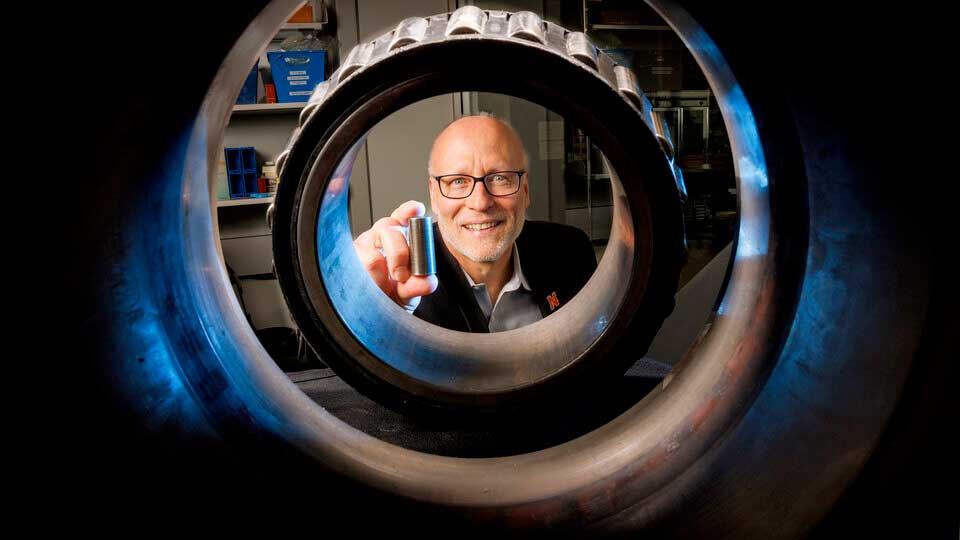Researchers at the University of Nebraska have developed a method to improve the safety and durability of roller bearings in railroad cars. By using metal powders and additive manufacturing in a state-of-the-art 3D printing lab, they achieved results comparable to traditional methods.
The research team, led by Joseph Turner, Robert W. Brightfelt Professor of Mechanical Engineering, fabricated the bearing rollers using laser powder bed fusion, a 3D printing process.
“We cooked up many different recipes and we printed many rollers,” Turner said. “We expected the printed rollers to show failure early on in the tests, but the bottom line is they performed just as well as conventional rollers. Now, we’re going to explore other ideas using this work as the foundation.”
The 3D printed rollers were produced at the Nebraska Engineering Additive Technology Labs from 8620HC, a high-carbon steel, and matched the properties of standard bearing rollers. Despite higher costs compared to conventional methods, Turner sees great potential for 3D printing in emergency situations and special applications.
“Basically, when you look at the two types of rollers side by side, you can’t see any difference in the look or their performance,” Turner said. “A lot of times (in metal AM), you will have concerns about the porosity or the internal microstructure of the metals in the first printed objects. Our 3D-printed rollers held up to the demands of the loads and distance that are expected from the mass-produced bearings.”
The next steps could be to find other ways to make 3D printing more financially viable. One possibility could be to use more expensive steel powders to apply a coating to bearing components made from cheaper metals, which could lead to cheaper and more robust bearings overall.
“You have to explore whether it’s even possible before you can begin figuring out when it’s cost effective,” Turner said. “Setting up a production line that makes the bearings is a huge investment but, maybe, it can work in emergency situations — like a mining company in the outback of Australia has a failure that might otherwise hurt their ability to move their product. If they can 3D print a part and not have to wait for something to be shipped to them.”
This research opens up new possibilities for the application of 3D printing technologies in traditional manufacturing industries and could lead to more efficient and flexible production in the long term.
“One of the things we in the NEAT Lab have become pretty proficient at is developing these new recipes for alloys,” Turner said. “As prices for our ingredients and equipment continue to drop in price, we will be able to try rolling out some new things that could appeal to a lot of fields and industries.”
The study “Fatigue Performance of Bearing Rollers Manufactured by Laser Powder Bed Fusion” was published in the ASTM Special Technical Publication on Bearing and Transmission Steels Technology.
Subscribe to our Newsletter
3DPresso is a weekly newsletter that links to the most exciting global stories from the 3D printing and additive manufacturing industry.





















